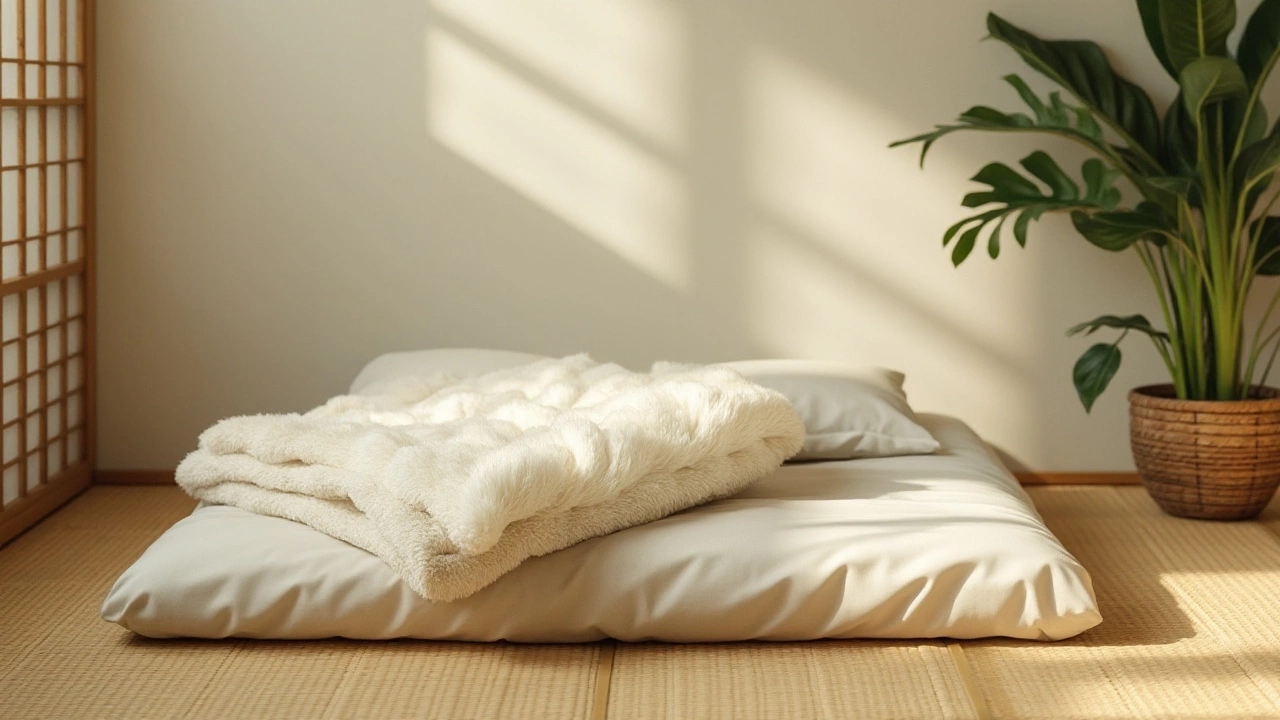Kakebuton: Traditional Japanese Bedding for Modern Homes
When you hear the word Kakebuton, a thin, foldable mattress that originated in Japan and is typically laid directly on the floor or a tatami mat. Also known as Japanese futon, it delivers a flexible sleep surface while freeing up floor space during the day. In the same breath, you might run into Futon, a lightweight, foldable bedding piece that can double as a couch – a close cousin that shares the same space‑saving DNA. The appeal of a kakebuton isn’t just about sleeping; it’s about creating a room that can switch from bedroom to lounge in minutes.
One of the biggest questions new owners ask is how to store a kakebuton without inviting mold or losing comfort. That’s where Bedroom storage, clever shelves, breathable containers, or vertical racks designed for bedding becomes the unsung hero. Proper storage keeps the mattress dry, preserves the cotton or polyester fill, and extends its lifespan – a point echoed in posts about furniture molds and moisture control. Pairing a kakebuton with smart storage also frees up room for other design elements, like the kakebuton‑friendly sideboard trend or a polyptych art piece that adds visual interest without crowding the floor.
Why Choose a Kakebuton?
Choosing a kakebuton is a design decision that touches on several related concepts. First, its low profile works hand‑in‑hand with modern interior design, contemporary styles that favor minimalism, neutral palettes, and multifunctional furniture. When you pair a plain, natural‑colored kakebuton with a splash of 2024 curtain color trend or a bold wallpaper texture, the room feels cohesive yet dynamic. Second, a kakebuton supports health‑focused lifestyles: sleeping on a firm, breathable surface can improve posture, while the ability to roll it up encourages regular cleaning and air circulation, reducing dust mite buildup – a concern highlighted in our guide on furniture mites. Finally, the cost advantage is clear; a quality kakebuton often costs a fraction of a traditional spring mattress, aligning with budget‑friendly living room makeover tips we share elsewhere.
Maintenance is straightforward but not optional. Regularly airing the kakebuton under sunlight helps evaporate moisture, a simple hack that aligns with our storage‑mold prevention article. When you’re ready to clean, a gentle vacuum on low setting removes dust, and spot‑cleaning with mild detergent keeps the fabric fresh. For deeper cleaning, consider a professional upholstery service – the same experts who restore antique tables can refresh your bedding without damaging its structure. By treating a kakebuton like any prized piece of furniture, you ensure it continues to look and feel new for years.
All these angles – design compatibility, storage strategy, health benefits, and cost efficiency – converge to make the kakebuton a versatile centerpiece in any home. Below you’ll find a curated collection of articles that dive deeper into each of these topics, from modernizing old furniture to picking the right curtain hues, from tackling mold in stored items to mastering bedroom organization. Browse the list to get practical tips, step‑by‑step guides, and the latest trends that will help you integrate a kakebuton seamlessly into your living space.
Understanding the Differences Between Shikibuton and Kakebuton for Sofa Beds
Japanese bedding has piqued the interest of many due to its minimalistic design and comfort. Shikibuton and Kakebuton are two essential components often confused for one another. Shikibuton, a type of mattress, and Kakebuton, resembling a comforter, serve different purposes. This article unravels their distinct features and offers insights into their use and benefits.
full article




